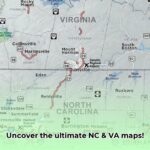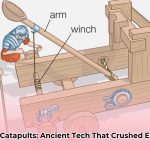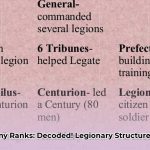Cleveland, a city etched with a rich industrial past, stands at the cusp of a dynamic transformation. This revitalization hinges on understanding the city’s complex urban fabric, using tools like maps of Cleveland to pinpoint opportunities and address challenges. For further examples of urban revitalization, see this resource on urban planning. This deep dive explores Cleveland’s urban development landscape, focusing on key areas for growth, strategic initiatives, and the vital role of community engagement in shaping a more prosperous and equitable future.
Deciphering Cleveland’s Urban Development Landscape
Cleveland’s unique geographic location presents both advantages and complexities that must be addressed for sustainable growth. Examining these factors through the lens of a map of Cleveland reveals pathways to progress.
Leveraging Location and Infrastructure
Cleveland’s coveted position on Lake Erie provides breathtaking waterfront vistas and recreational opportunities. However, the city’s dispersed layout demands efficient transportation solutions. A detailed map of Cleveland highlights the existing infrastructure network, revealing areas where improvements are crucial for seamless connectivity and future expansion. Modernizing public transit would enhance accessibility, linking neighborhoods and fostering economic opportunities across the city. Further, strategically planned green spaces and bike paths, informed by spatial analysis, can promote healthier lifestyles and connect communities, enriching the urban experience.
Addressing Economic Disparities Through Targeted Investment
Cleveland’s economic landscape is marked by a stark contrast between thriving commercial centers and struggling neighborhoods. A map of Cleveland visually represents this disparity, underscoring the need for targeted investments in under-resourced communities. The Middle Neighborhoods Initiative (MNI) stands as a prime example of such an approach. By strategically acquiring properties, promoting business growth, and fostering community involvement, MNI aims to revitalize stable but under-resourced areas, preempting predatory investors and ensuring equitable development. Data-driven mapping plays a pivotal role in identifying and prioritizing areas for equitable investment, ensuring resources are directed where they are most needed. This includes analyzing demographic data, economic indicators, and housing conditions to create a comprehensive understanding of neighborhood needs.
Reimagining the Waterfront: Sustainable Growth and Revitalization
The Cuyahoga Riverfront Master Plan envisions a vibrant downtown seamlessly integrated with its waterfront. This ambitious project, visualized through a map of Cleveland, aims to spur economic growth and improve accessibility while prioritizing environmental sustainability. Balancing revitalization goals with the needs of existing communities and environmental protection requires a multi-faceted approach. This includes incorporating green infrastructure, promoting sustainable building practices, and implementing robust pollution mitigation strategies along the Cuyahoga River. Furthermore, fostering open communication and actively engaging residents in the planning process ensures that the revitalization benefits all stakeholders and respects the unique character of Cleveland’s waterfront.
Navigating Cleveland’s Affordable Housing Funding Landscape
Cleveland’s commitment to affordable housing is evident in its diverse funding initiatives, including the Housing Trust Fund, Community Development Block Grants (CDBG), and the Cleveland Housing Investment Fund (CHIF). Successfully navigating this complex funding landscape requires a strategic and informed approach.
Securing Funding: A Strategic Roadmap
-
Deep Dive Research: Thorough investigation of all available funding sources—city, state, and federal programs—is essential. Understanding each program’s unique eligibility criteria, application processes, and funding priorities is crucial for maximizing success. Online databases, government websites, and consultations with housing experts can provide valuable resources.
-
Building Strategic Alliances: Collaborating with city officials, experienced developers, community organizations, and financial institutions provides invaluable insights, potential funding partnerships, and access to a broader network of support. These partnerships can strengthen applications and enhance project viability.
-
Data-Driven Project Design: Aligning your project with funding priorities and demonstrating a clear understanding of community needs significantly strengthens your application. Incorporating sustainable features, such as energy-efficient design and green building materials, enhances competitiveness and aligns with broader city sustainability goals. Data analysis of housing needs, demographics, and market trends informs project design and ensures its relevance.
-
Streamlined Application Process: Submitting complete and accurate applications well in advance of deadlines demonstrates professionalism and preparedness. A clear understanding of program requirements, attention to detail, and readily available supporting documentation streamline the review process and increase the likelihood of success.
-
Long-Term Financial Planning: A comprehensive financial plan that incorporates diverse funding sources, anticipates potential challenges, and outlines strategies for long-term sustainability is critical for project success. This plan should address operating costs, maintenance expenses, and potential fluctuations in the real estate market.
Cleveland’s Riverfront Renaissance: Balancing Growth and Sustainability
The Cuyahoga Riverfront Master Plan signifies a substantial investment in Cleveland’s future, aiming to rejuvenate the waterfront and stimulate economic growth. Realizing this ambitious vision requires careful consideration of potential challenges and a commitment to sustainable development.
Key Considerations for Sustainable Waterfront Development
-
Public-Private Partnerships: Robust collaborations between public and private entities are essential for attracting the investment required to sustain the project’s momentum. These partnerships leverage the expertise and resources of both sectors, creating a synergistic approach to development.
-
Community Engagement and Inclusion: Integrating new development with existing neighborhoods necessitates careful planning and active community input. Engaging residents through public forums, surveys, and stakeholder meetings ensures that revitalization efforts benefit all residents and preserve the unique character of each neighborhood.
-
Environmental Stewardship and Resilience: Prioritizing sustainable building practices, implementing green infrastructure, and addressing pollution mitigation along the Cuyahoga River are vital for responsible environmental stewardship. This includes protecting natural habitats, improving water quality, and creating resilient infrastructure that can withstand future environmental challenges.
-
Risk Management and Adaptation: Developing effective strategies to mitigate potential risks, such as cost overruns, environmental concerns, and changing market conditions, is crucial for long-term project success. This involves conducting thorough risk assessments, developing contingency plans, and incorporating adaptive management strategies to respond to unforeseen challenges.
Empowering Equitable Neighborhoods: The Middle Neighborhoods Initiative
The Middle Neighborhoods Initiative (MNI) exemplifies Cleveland’s commitment to equitable development, focusing on revitalizing stable but under-resourced neighborhoods. This initiative’s success hinges on a comprehensive strategy that empowers residents and fosters sustainable growth.
Key Strategies for Equitable Neighborhood Development
-
Strategic Property Acquisition and Community Land Trusts: Proactively acquiring properties in targeted neighborhoods and utilizing community land trusts helps outmaneuver predatory investors and ensures that revitalization efforts benefit residents. This approach preserves affordability and prevents displacement, promoting long-term community stability.
-
Business Development and Job Creation through Incubators and Skills Training: Fostering business growth through incubator programs, providing access to capital, and offering job skills training creates economic opportunities and contributes to the overall vibrancy of the community. Supporting local entrepreneurs and small businesses empowers residents and generates economic activity within the neighborhood.
-
Community Involvement and Empowerment through Participatory Planning: Engaging residents in the revitalization process through participatory planning ensures that development efforts align with community needs and priorities. This includes establishing community advisory boards, conducting neighborhood surveys, and hosting public forums to gather input and foster a sense of ownership.
-
Long-Term Sustainability and Diversified Funding: Securing ongoing funding through a combination of public and private sources, grant applications, and community development financial institutions (CDFIs) is crucial for the initiative’s long-term viability and impact. Adapting to the changing real estate market and diversifying funding streams ensures the initiative’s resilience and ability to adapt to future challenges.





![Unearth Ancient City Map Rome: New Atlas For Urban Planners [Reference] city_map_ancient_rome_edited](https://www.lolaapp.com/wp-content/uploads/2025/08/city_map_ancient_rome_edited-150x150.jpg)










